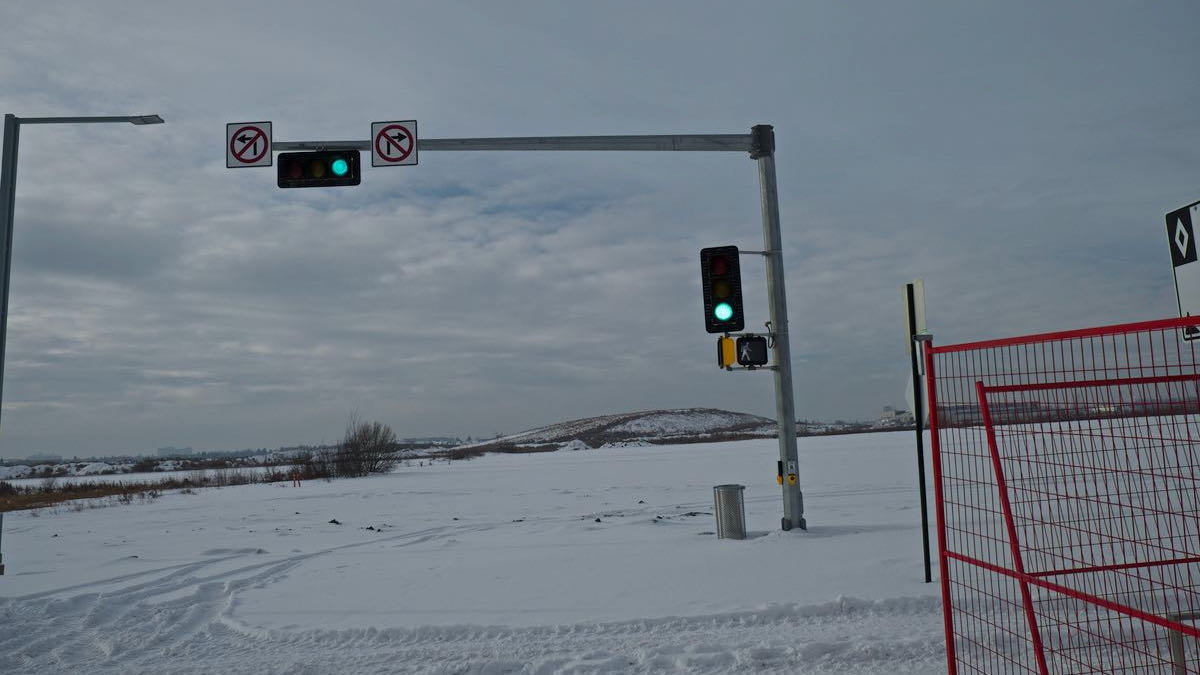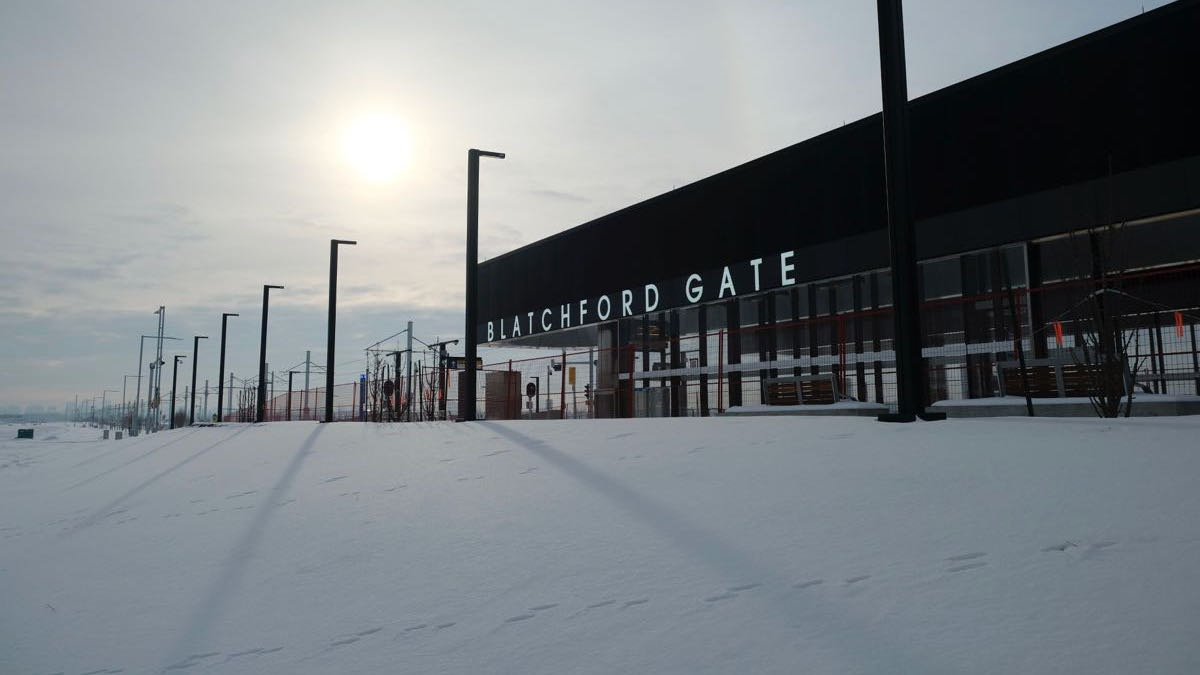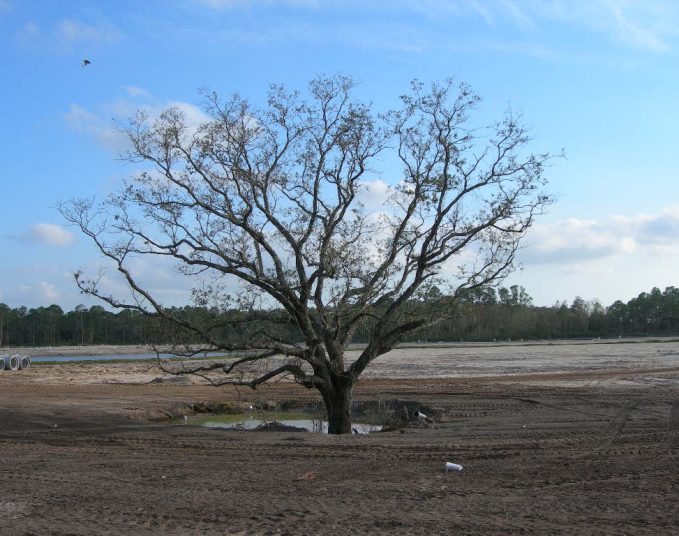Have you ever seen images from New Mexico, of the fake communities that were built, filled with mannequins, all to be destroyed by the atomic weapons being tested nearby? The fake towns are eerie, right?
OK, follow me. Head north on 107th Street, just past the NAIT Campus. You will see EPCOR’s Hugh J. Bolton Service Centre Yard. Take a left, and you will get to a dead end at 109th Street. A fence separates you from what used to be the Edmonton City Centre airport. Inside is an empty field, as the City’s Blatchford project waits and waits for developers to bite.
But, wait, the field isn’t totally empty. Squint and you’ll see LRT tracks. And wait, is that a fully built out LRT station? Next to it is where a road is marked out, and there’s even a set of traffic lights, going from green to yellow to red, through not a vehicle can be seen.
All that’s missing are the mannequins.
On January 20, the NAIT/Blatchford Market Station opened, ahead of schedule. It’s part of the $291 million Phase I expansion of the Metro Line. The City trumpeted the success. Now, five-car trains can run on the Metro Line into the sleek new station.
But, you might notice the tracks don’t end at NAIT/Blatchford Market. They extend north into the field, eventually leading to another fully completed station — Blatchford Gate.
There was no fanfare for the completion of this station. It sits alone, unused. And there is no plan to open it in the immediate future.
So, why would the City push to build a station that’s currently sitting in the middle of nowhere?

“We realize the timing of building the LRT line doesn’t perfectly align with the timeline of Blatchford,” says Trevor Dennehy, Edmonton Transit’s director of LRT operations and maintenance. “However, when funding from other orders of government becomes available to build mass transit, we want to take advantage of those opportunities for the long-term benefit of Edmontonians. With Metro Line LRT construction purposely planned ahead of adjacent developments, it presented a rare opportunity for our contractor to complete work in a relatively open area with minimal disruptions. The land use in the area will be changing over the coming years, and LRT infrastructure is now in place to meet future demands.”
So, when will Blatchford Gate actually have a train enter the station? The answer is… we don’t know.
“No timeline has been determined for opening the Blatchford Gate station,” says Dennehy. “ETS has service standards to help determine when service is warranted in a particular area. Currently, ridership demand in the area surrounding the Blatchford Gate station does not warrant service and, during the fall 2023 supplemental budget adjustment process, Council decided not to proceed with funding service commencement at this location. As the east side of Blatchford continues to develop in the coming years, we’ll revisit service demand to determine when to open the station.”
The City expects Blatchford to be home to 30,000 people. But, as of the fall of 2023, there were only 50 developed units on site. The City planned big for Blatchford, and that included transit service. Currently, most of Blatchford is undeveloped and fenced off. And that makes the Blatchford Gate station stand out like someone had built a station on Mars. It’s not that hard to imagine Matt Damon in a spacesuit, emerging out of Blatchford Gate.
But, sooner or later, more and more people will catch a glimpse of this station, either from the NAIT campus or from the Yellowhead. So, how does the City prevent this station from getting tagged like we were in late 1970s New York?
“The City has an enhanced security plan for the site to maintain and protect the Blatchford Gate station infrastructure,” says Dennehy. “This includes security fencing around the site, monitoring security cameras and increasing proactive patrols of the area.”
Savvy AF. Blunt AF. Edmonton AF.




